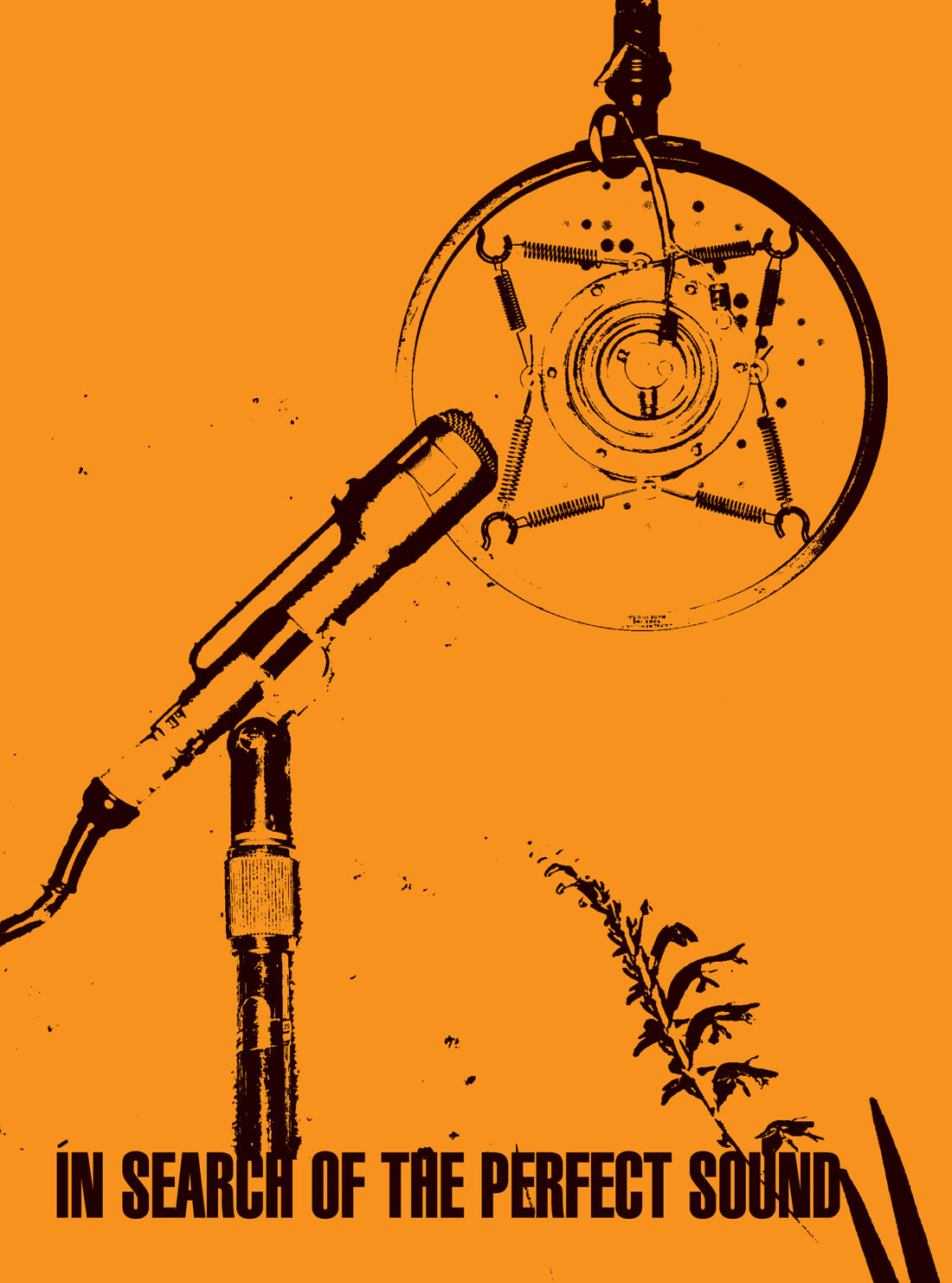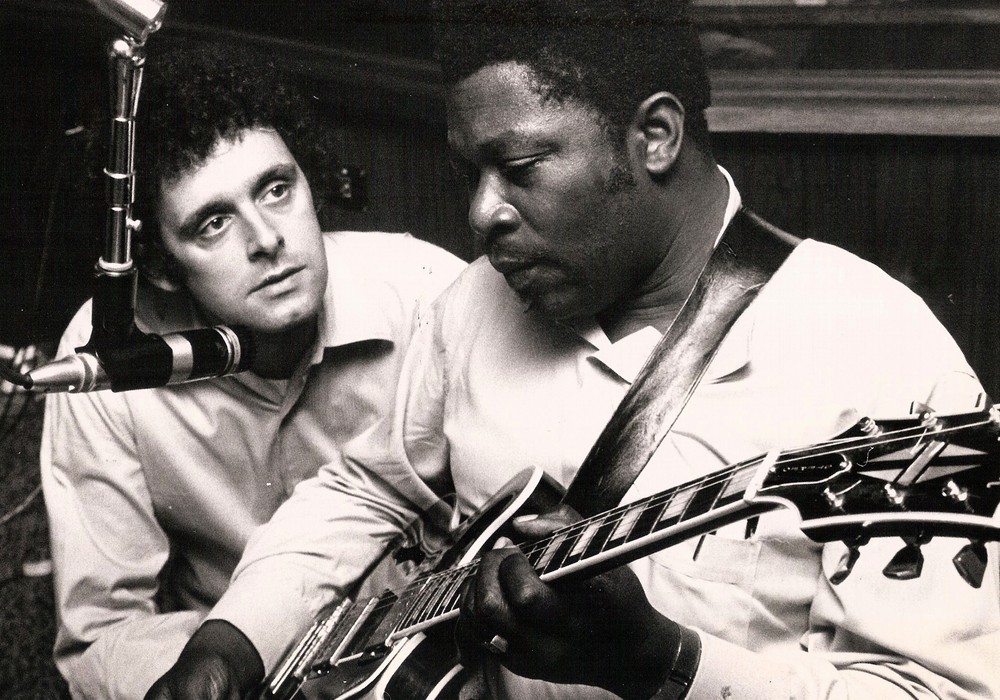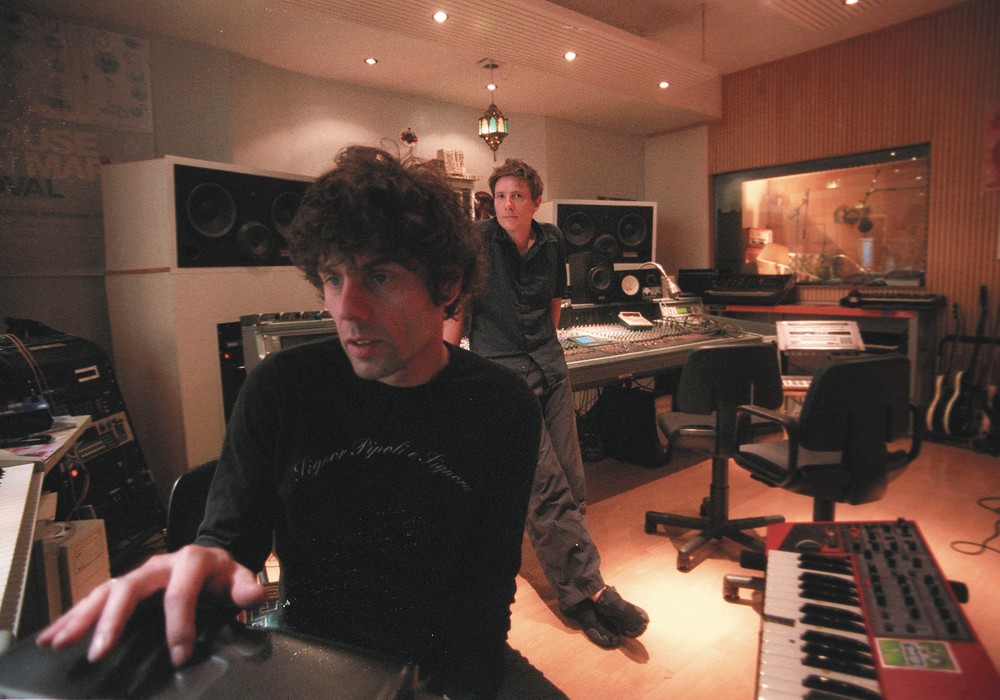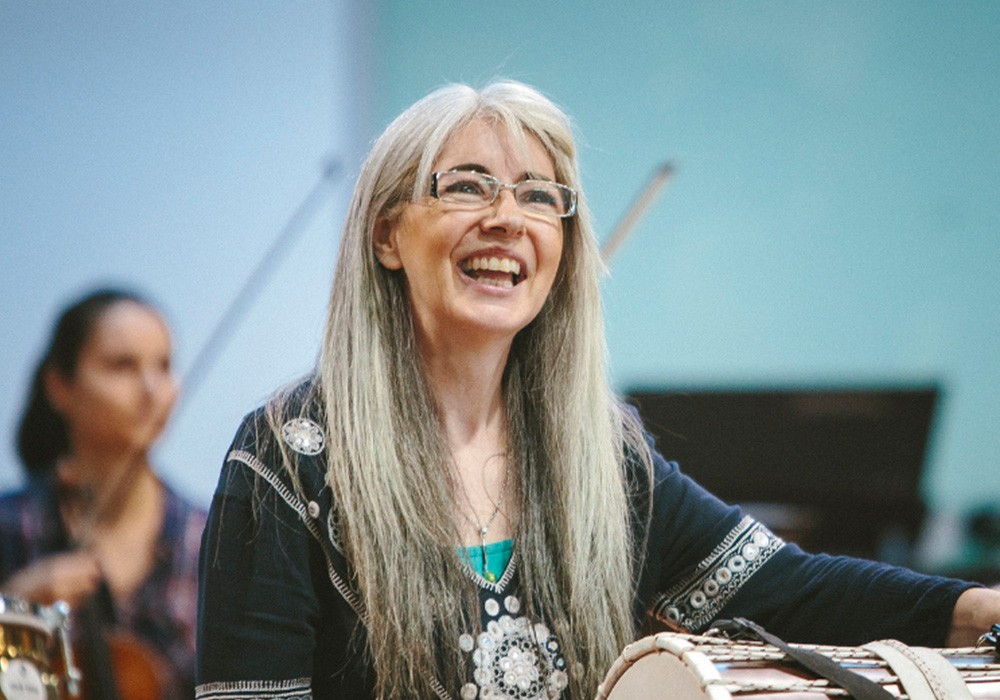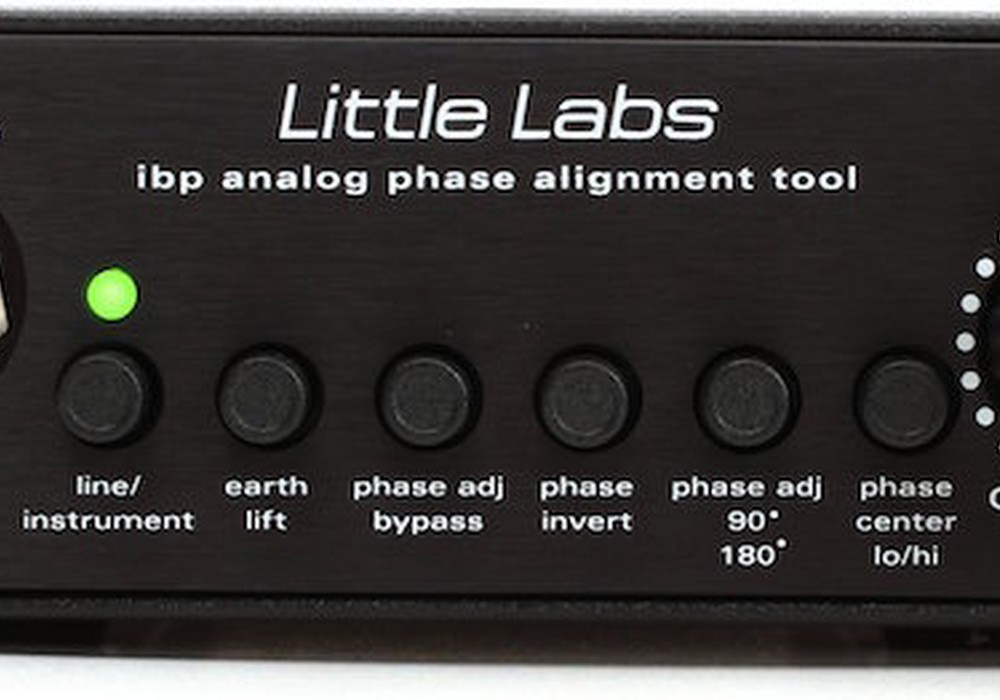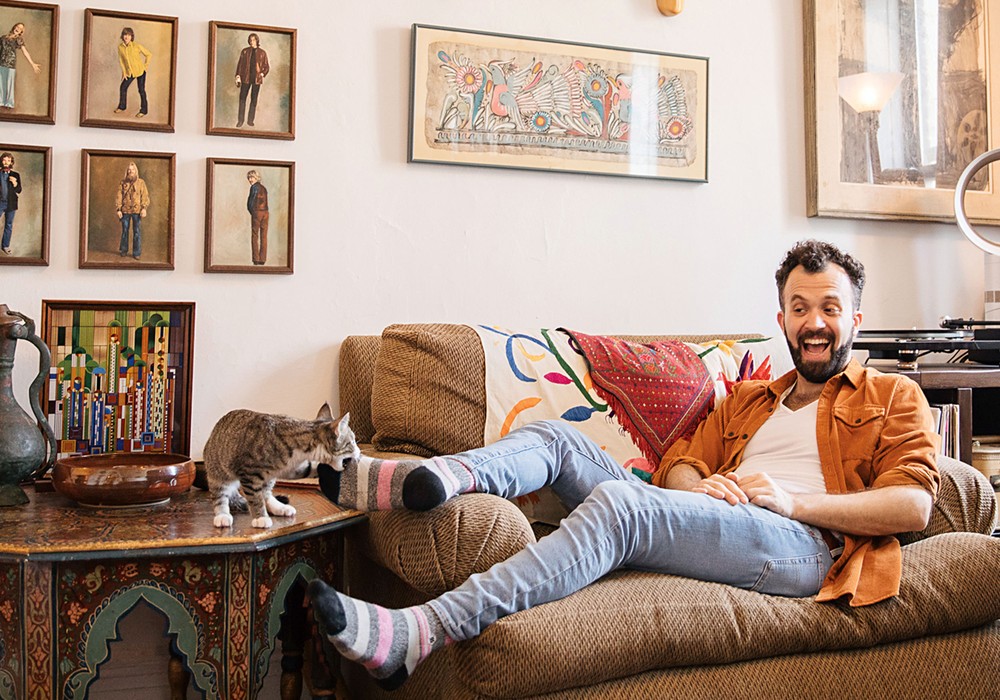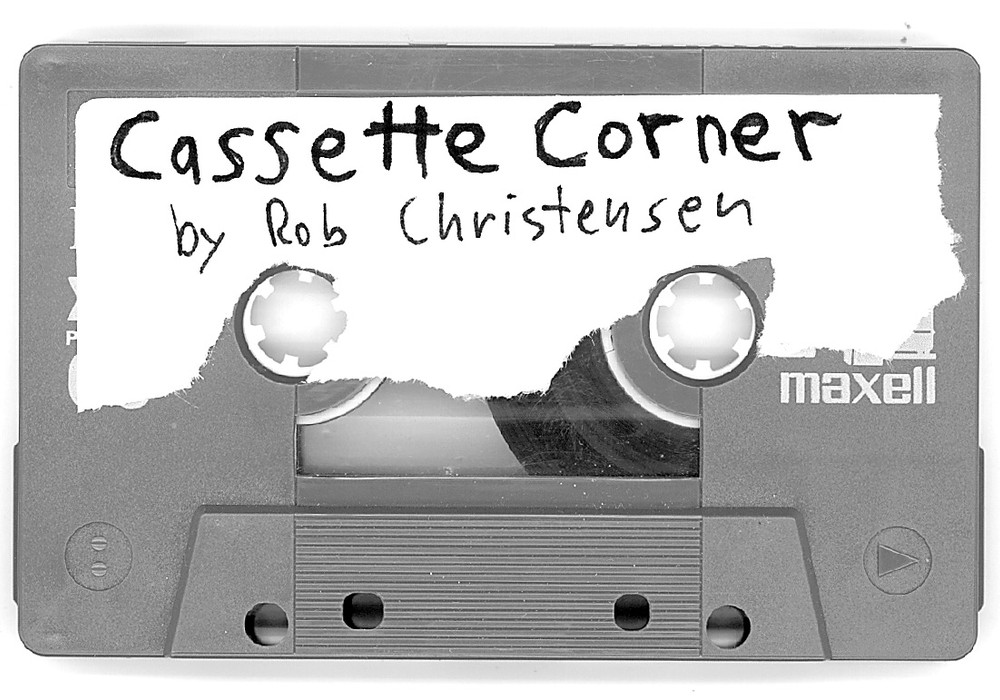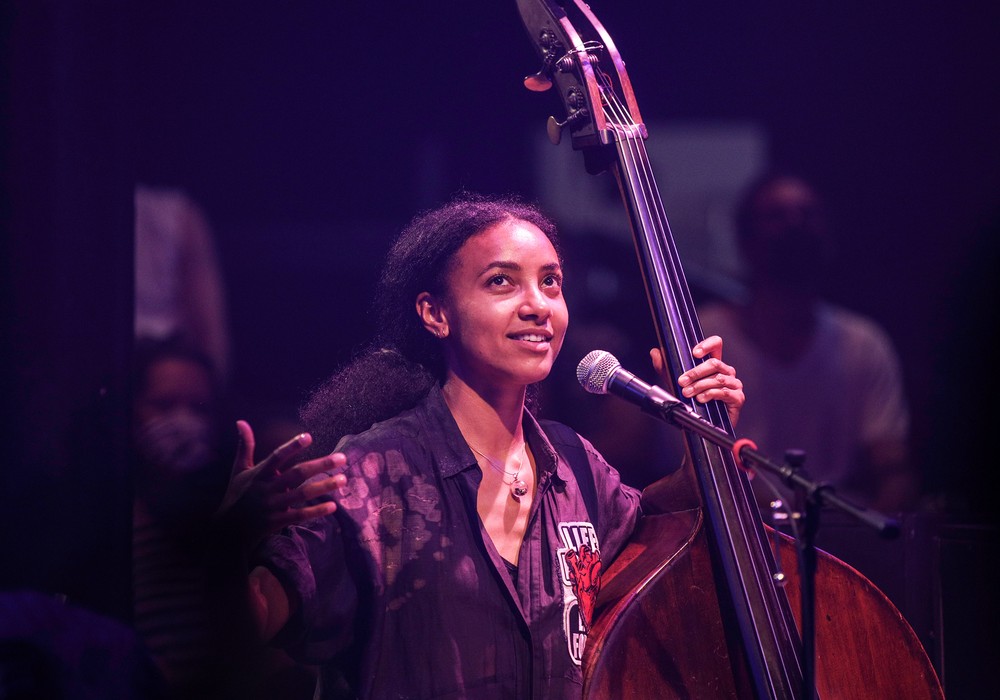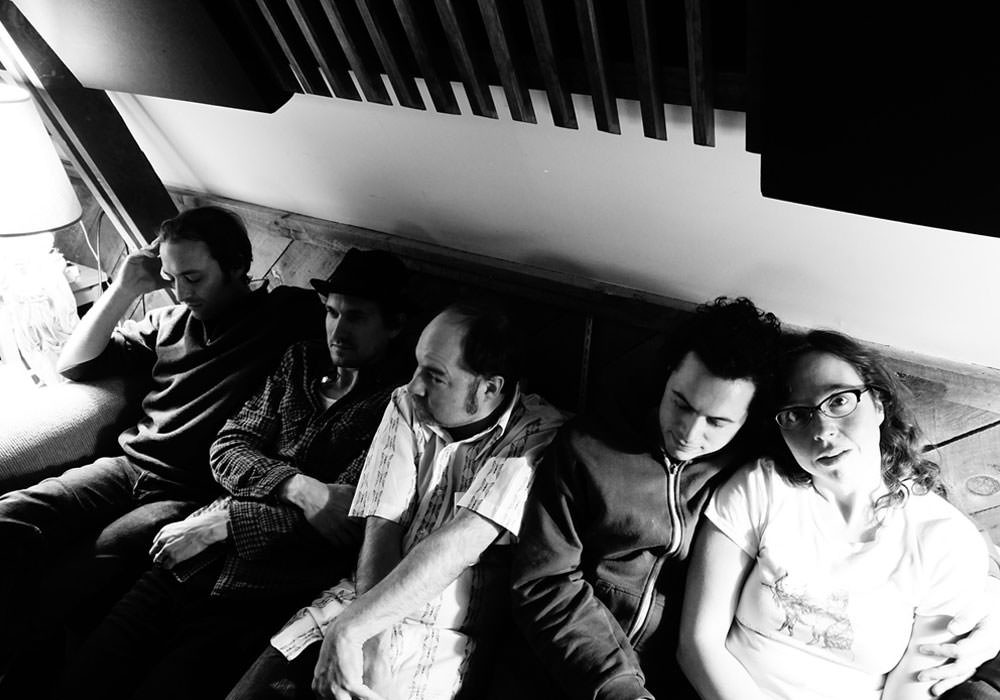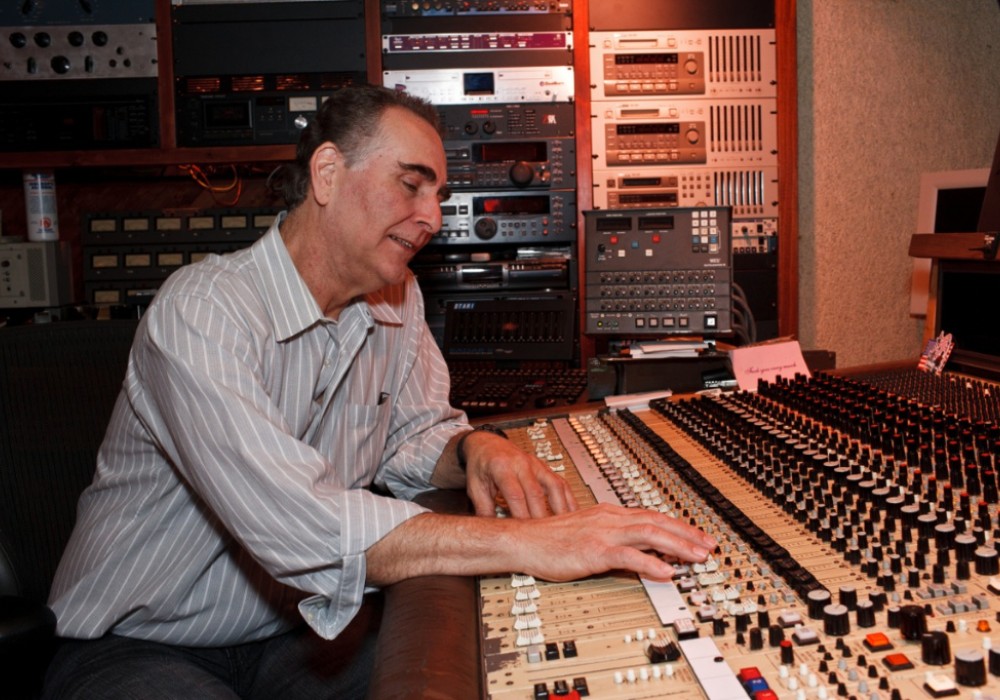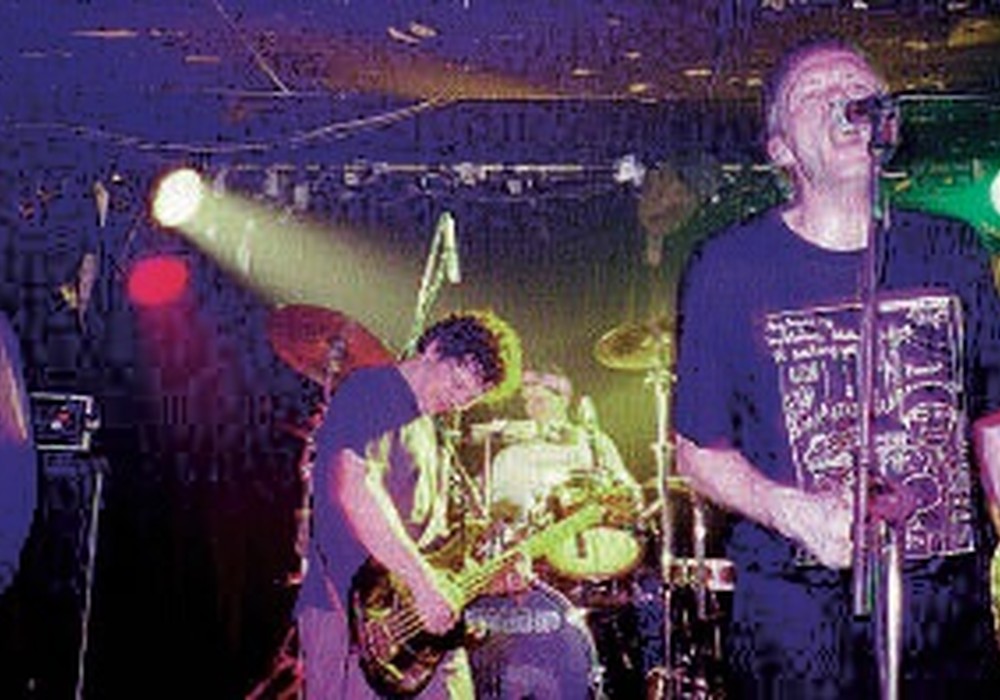Legendary record producer Bill Szymczyk helped dial in sounds for The Eagles, Joe Walsh, The James Gang, The Who, Elvin Bishop, and The J. Geils Band. Many have argued that AOR [Album-Orientated Rock] radio was launched on a handful of producers' — including Szymczyk's — watch. His many hits for The Eagles only add weight to that theory.
Bill's first big break into the business as a producer would come courtesy of his late 1960's collaboration with blues legend B.B. King. "The Thrill is Gone's" title may have advertised a somber mood, but working side by side with B.B., Szymczyk remembers the studio vibe as being just the opposite. "He had a big smile on his face the first time he heard the first rundown of the mix. This was following a call I'd made to him at 2 o'clock in the morning. I'd dialed him up and said, 'I want to put strings on this.' And he said, 'What?' Then he said, 'Well, okay. I'll try it.' Because he believed in me. So I had Bert de Coteaux, who was my arranger at the time, write a nice string chart for it. The only thing I told Burt was, 'I want it to be dark. I want it to be not joyful in any way; the thrill is gone. I want it to be a dark string chart.' He brought it in and it was hypnotic. B.B. said, 'I want to come to the session,' and I said, 'Of course, come.' I was engineering the string overdubs, and glanced over at him. When he started smiling, I thought, 'Okay, I'm good now.' "
"When we started recording 'The Thrill is Gone,' the basic track for that was cut as the last tune on maybe a 7 to 11 p.m. session. I think B.B. was playing [his guitar] Lucille through a Fender amp, and he recorded vocals while he was playing guitar. I only overdubbed him vocally on one cut, and that was years later on 'Hummingbird.' On B.B.'s vocal for 'The Thrill is Gone,' and others, I tended to use some echo and some reverb; but nothing like we would do nowadays, with delays and whatnot. Ahead of the session starting, we'd sat down in the studio with the players and worked out the arrangement. He said, 'Okay, I like this.' He was all for it, and we did the whole album with my musicians. 'The Thrill is Gone' became one of his biggest hits. I was just flipping out over that. Working with B.B., I was thrilled at being able to record a legend, and have success doing it!"
Following success with B.B. King, it was the producer's kindred collaboration with lead guitarist Joe Walsh and his group The James Gang that first launched Szymczyk onto '70s rock radio. Looking back decades later on the sheer serendipity of it all, he hones in on his central role in discovering, and helping to shape, the solo career of Joe Walsh; something he counts among his proudest moments as a producer. "Once I'd had success with B.B., the record company said, 'Maybe you do know what you're doing,' I kept telling them, 'I want to sign my own band, because I'm not just a blues guy. I want to make a rock 'n' roll record.' They said, 'Okay, go out and find somebody, and sign them.' I had a friend of mine who used to be a roommate in New York, named Dick Korn, who had moved to Cleveland and was working as the manager/head bartender at this rock club called Otto's Grotto. It was in the basement of the Statler Hotel. He said, 'Man, there're a bunch of great acts coming through here. You've gotta come and check some of them out!' So I started going to Cleveland, and in the course of three or four visits, a band called The Tree Stumps — which was an awful name — came through. The lead singer was Michael Stanley, and I really liked his tunes and his voice. I signed them and changed their name to Silk. The next group I signed was a three-piece, power trio called The James Gang. I made records with both of them. Silk barely cracked the charts, but The James Gang got played a lot and that was the beginning of their career."
In the early '70s, between the James Gang's breakout hit "Funk #49," and later Joe Walsh solo smashes like "Rocky Mountain Way," Szymczyk and Walsh set up shop at the studios of Caribou Ranch in Colorado. "Joe moved out to Denver just shortly after I did. He actually moved up to Nederland, Colorado. We'd heard [producer] Jimmy Guercio — who I had met a couple times, but not gotten to know very well — was living just outside Nederland on a huge ranch and building a studio. Walsh and I went over there and were astounded at how it looked; it was under construction and not quite complete. They had a little MCI 400 console and a 16-track reel machine. There was about a two-year run where I was up there. It was like inmates running the asylum, because there was nobody around. If something broke, we had to fix it — me, my assistant, and whoever the band was." Along with recording hits like Rick Derringer's "Rock & Roll Hoochie Koo," Szymczyk's personal highlight was the recording of the Walsh's "Rocky Mountain Way," an audio adventure that had actually begun "when Joe was producing himself at Criteria [Studios, Miami], where he had done the drums. He'd done this shuffle track by himself that eventually turned into 'Rocky Mountain Way.' He brought it back and basically we stripped everything off, except the drums, and started over again — all the bass, kick, piano, the guitars, and everything. By then he'd had the words, but when he first cut the track, he was thinking, 'Let's just do this blues-shuffle thing.' Two to three months later, when we were working at Caribou, he had the song done, so we knew exactly how to go about finishing it. Joe liked to layer his guitar tracks; there're like six or seven guitars of various kinds, and the talk box."
In 1974, Bill caught the ears of the fast-rising group the Eagles. The band recruited Szymczyk in an effort to shed their softer, country-leaning side for a harder-edged sound. This was an ambition the group made obvious from their first introductory meeting, "Irving Azoff [the Eagles' manager] set up a meeting between me and the band. We had dinner and they asked me questions about rock. I was hesitant about doing it — I didn't want to do a 'cowboy' band; I wanted to do a rock 'n' roll band. When they said, 'We wanna rock!' I said, 'Well good. If you wanna rock, I'm your man!' One thing led to another, and we started working together."
From session one Szymczyk recalled that "with the Eagles, my M.O. was to try and keep everything light, happy, and moving forward, as well as eliminate as much hassle as possible from outside the control room, and inside the control room." From the very first track the team cut together, "Already Gone," it was obvious the chemistry was working, with Bill proudly pointing to the chart-topper as "the very first cut I did with them. That was a Jack Tempchin song they brought in. They said, 'We've been playing around with this for a while.' It was a case of, 'Well, let's just turn it up and go!' Glenn Frey had the opportunity to play lead guitar, which [former producer] Glyn Johns would never let him do, because it was always Bernie [Leadon]. Bernie was the country player, and Johns gravitated towards that, as opposed to Glenn Frey. Frey was not as gifted a musician, at the time, as Bernie was; but he really had the desire to rock, so I took a lot of time with him on the guitar solos, as well as the sounds of the rhythm guitars, and we were off. I would maybe use one of three different mics on a guitar amp: a [Shure] SM57, an AKG C414, and a Sennheiser. I wasn't double-mic'ing anything in those days, and I always tracked everybody in the same room, but I would gobo the amps off from one another. We were recording at Record Plant Studio A in L.A. — the original 3rd Street Record Plant. We were recording on a Quad Eight 16-channel console."
Following the success of albums On the Border and One of These Nights (a Grammy winner for Album of the Year in 1975), Szymczyk and the group — who now included longtime collaborator Joe Walsh — would embark on their most ambitious studio adventure yet, as they headed in to record an album that went on to sell a staggering 32 million copies. The musical mythos of Hotel California would revolve around everything one could expect from the making of an epic album, beginning with the now legendarily lengthy writing sessions. "We'd work for three weeks, then take a month off. During that month off is when Don [Henley] and Glenn would write lyrics. They had innate talent as songwriters, and fed off each other brilliantly, much like Lennon and McCartney. They'd go to each other's houses, and then come back to the studio for the next session with, 'Well, here it is.' Glenn and Don, by that point, both knew who was going to sing lead on what song, and they would always have decided that prior to cutting the lead vocal."
The iconic title track, "Hotel California," began after Szymczyk first heard the riff off, "a cassette of a bunch of Don Felder riffs and ideas. Don Henley picked up on that. He didn't have any idea what the song was going to be about, but said, 'Let's work on this riff for a while.' During the acoustic introduction of the song, where Don Felder opens with his signature riff, he was playing a 12-string, which I recorded with three mics. My go-to mic for recording acoustic guitar was a Neumann KM 84 — I've used the same one since before 'Hotel California,' and I still use it to this day. But Don had a pickup in his guitar, off to a pair of small Orange amps, and I mic'd them in stereo. The initial opening guitar intro is acoustic guitar in the middle, and an amp on both sides, with a chorus that is flowing back and forth between the two amps."
Eventually the producer discovered that to reach sonic perfection, the song would be recorded by the band three full times before everyone felt they had finally gotten the perfect take. He confirms, "We indeed recorded that track three times! The first time we did it was too fast, but you're doing a track, and you have no idea what the words are, or where they're going to be. When Don would start to get an idea about what to write about, he said, 'Well, this is going to be too fast. We've got to cut it again.' So we cut it again. Then he progressed further with the song's writing, and next decided it was in the wrong key. The third time's the charm, and that's the version that everybody knows. By then, he pretty much had 90% of the lyrics done."
By the time he was ready to team Felder and Walsh up as a stereo pair on the song's outro solo, the producer remembered feeling Joe's greatest assets as a player shone brilliantly alongside Felder's own, one that went down over, "a two-day period working at Criteria Studios. We ran lines out to the amplifiers in the studio, but they were both performing in the control room. I was in the middle, Joe Walsh was on one side, Don Felder was on the other side, and we just attacked this ending blend of solos. It took us two days, but it is still one of the highlights of my career. There was a lot of stop/start and, 'Let's try this,' and, 'That didn't work,' 'Well, if we did this with that, maybe that would work.' Piece by piece by piece until it was done. They were equal gunfighters, Joe and Don."
Bill joked throughout the process that, "the console was my weapon." By the time the team had declared victory and neared the album's finish line, a final flash of inspiration arrived when Walsh and Henley took the wheel, co-writing "Life in the Fast Lane." One of rock radio's most rotated classics, the producer instantly recognized the potential of Walsh's riff. "That was Joe's tune. He brought that lick in, and Henley wrote the words. By that point in my working relationship with Joe, when I heard a riff of his, I could tell when it was a hit riff, and we all jumped on that one. Most of the lead solo overdubs were done in the control room, but the original basic track would have been done with everybody in the studio. Once we started overdubbing guitars, they would come in one at a time. But for 'Life in the Fast Lane,' that's all Joe; even though Felder played some rhythm parts and doubled the lead lick an octave higher, it was all support to what Joe was doing on guitar."
As he wrapped production on what would go on to become one of the best-selling rock albums of all time, Szymczyk had already set his sights on recording Joe Walsh's third solo studio album, But Seriously, Folks... "Life's Been Good" features another one of Walsh's infectious hooks, and the song was a summary of all the glorious excess of stardom the Eagles had reached by that point. "To get the album underway, we rented a 72-foot yacht out of Miami and went down to the [Florida] Keys with a 4-track machine and all their instruments. We spent a week down in the Keys hashing these tunes out. Pretty much everything on the album was rehearsed on that boat. 'Life's Been Good' was one of them."
Bill favored the Neumann U 87 as his, "basic go-to vocal mic, at that point. To me, it was a very high-quality microphone. Mostly I did not have access to the old U 47s and the classic Neumanns. I never had any of those, but an 87 was basically a U 67, just with transistors instead of tubes. It worked great with Joe. There are a bunch of effects on his vocals for 'Life's Been Good.' On the verses, there's a digital delay that's left and right that is maybe 40 milliseconds on one side, 80 milliseconds on the other. Then I take that off on the choruses and put a [Cooper] Time Cube on him."
In what could have become one of rock's greatest travesties, the producer revealed that the song almost didn't make it on the album. "We got back to my studio, which by this point was set up at Bayshore [Recording Studios] in Miami. All the way through making the record, he was getting more and more hesitant about putting this song out, because he thought the public would take it the wrong way lyrically. I was the one who was just on him constantly, saying, 'No.' At one point he wasn't even going to finish it. I told him, 'You must finish this. This is a killer record!' Finally he agreed, and the rest is history. I did change a couple of melody lines in it, so it made it easier for him to sing and gave it more of a lighthearted feeling. Initially it was (singing in low, slow tone) 'Life's been good to me so far.' It was a real kind of down and dour, and I said, 'You've gotta be exuberant there. LIFE'S BEEN GOOD TO ME SO FAR!'"
It was the end of the 1970s, and Szymczyk's run of successful collaborations with the Eagles proved true the adage that all good things must come to an end. The Long Run would become the band's last studio album for almost 25 years. "All the way through the making of Hotel California everybody was getting along pretty good. But coming off the heels of the success of Hotel California, among the band there were a lot of expectations. Everybody was like, 'How are we going to top that?' According to the critics we didn't, but in my mind it was a very, very good album — it just took forever to get done. The pressure was seriously high, and everybody was getting a little antsy with each other. That's when the dissension in the ranks started. Instead of the old all-for-one/one-for-all, it was, 'What about me?' and a lot of that attitude. They were still a team, but instead of everybody riding in the same car, eating together, and staying in the same house, it was two or three different houses, everybody had their own car, and it was more standoffish, if you will. But when they got into the studio, 90 percent of the time we all got along good and did our work. We would always track together. We might replace one thing if it didn't fit later on, but we would do five-piece, live off the floor all the time."
One pleasure the producer took great satisfaction in with the making of The Long Run came with the fact that he was working on his own turf this time around, allowing him to maintain a sonic order of sorts. "We recorded that record mostly at my studio. There were some things done at Record Plant in L.A, but we did most of it in Miami, which was the first one we'd recorded at my studio. Hotel California was done at Criteria and Record Plant. Right as we were finishing I was building my studio, Bayshore Recording. It had a relatively dead room, about the same size as Record Plant Studio A. It was not a huge room, but it worked really, really well for how I wanted the studio to sound; regardless of who I was recording. Studios are people's personal taste and, at that time, in 1976, we weren't doing a lot of live-room stuff; things were still pretty much dead. It wasn't until about ten years later that the big live-room drum sound came into being and everybody was changing to that. The studio had all the equipment I wanted as far as outboard gear, which included a bunch of [Urie] LA-3a and 1176 [limiting amplifiers], a couple Eventide digital delays and Harmonizers (which were really, really new at the time), my old trusty Cooper Time Cube, as well as a MCI JH-500 Series console. I had a little help in designing that one, because MCI was right up the street, in Fort Lauderdale."
But there was a looming question:
"How do you top Hotel California? That's the thing I remember most about The Long Run. Initially it was going to be a double album. They figured, 'What if we give them a double album, and really stretch out?' We would cut track, after track, after track. The songwriting modus operandi was that the music would come first; the lyrics would come later, to be written to the track. We had roughly under 20 tracks, but they were in certain stages of completion. We were into this album about a year when they realized, 'Well, hell, we're never going to get a double album.' So they just concentrated on the ones that were the most fully lyrically done, and that's what turned out to be the final track listing. There are about eight or nine tracks that are floating around, left over." The album satisfied fans, as well as the band's appetite for one last go-around, selling seven million copies and producing three Top 10 singles with "Heartache Tonight," "The Long Run," and "I Can't Tell You Why." It's a perfect swan song for Bill and the band.
As the 1980's dawned, Pete Townshend came knocking on Bill Szymczyk's door, offering him what would have sounded like any producer's dream gig: producing The Who's Face Dances LP. In truth, the band was having a hard time escaping the dark shadow cast over them by the recent death of their longtime drummer, placing their new producer in the unenviable position of making, "their first album after Keith Moon had passed away. Kenney Jones was the drummer, so he and I were the 'new kids.' There were the usual band rifts going on. For instance, they didn't want to be around when Roger [Daltrey] was doing vocals, and Roger never showed up when we were cutting tracks. I'd have to do each one of them individually, almost. That was the hardest record I ever had to produce. I worked my ass off on that."
"Pete was the reason I did that album. He's the one that wanted to hire me." Szymczyk was able to throw the notion of a "concept album" out the window. "Pete brought songs in, and because he did not have a cohesive Quadrophenia or Tommy vibe to it, it was strictly, 'Here're a bunch of songs.' There was no storyline to follow, per se; but, unlike the Eagles, he had the songs finished. For instance, that bubbly loop in 'You Better You Bet' — he brought that in and we basically overdubbed everything to that. We also had John "Rabbit" Bundrick, the piano player, who Pete just loved (and I could see why), playing on every one of the tracks while we were cutting. He was filling in a lot of the melodic stuff."
The producer remembers Townsend having, "five or six different amps to go to. We'd put up some mics, and away we'd go. As a player, he was the epitome of a slash-and-burn guy. He would attack it, and it was fun to watch. Pete was impressive as a guitar player, songwriter, visionary, and just all-around really good guy. I still am in communication with him to this day." While he enjoyed his collaboration with Pete, when reflecting on his opinion of the album following its release, the producer confesses, "I'll be honest with you. To this day I'm not real happy with the mix of the whole album. It was tough, because of a lot of the dissention. Plus there was some serious drinking going on — not by me, but by the band members — so it was a rough record to make."
Bill took some time off in the mid and later '80s to recuperate from the grind of his production schedule throughout the previous decade. "I didn't have the desire to be in the studio 24/7 like I used to." But he readied himself after receiving the call many rock fans thought would never come again. Signed on to co-produce the Eagles' reunion album, the aptly titled Long Road Out of Eden, the producer set his sights on the strategy of, "wanting to take everybody back to the mindset where it was all-for-one/one-for-all. We initially started out that way. Notice how I said 'initially.' After six to eight months, it became the old 'me/mine' kind of thing. 'Who's the leader of the band?' 'Who's making choices?' To me, that's purely ego. To get around that to keep work going, I relied on humor and just keeping it light. That's the best recommendation I can say, because I was never a dictator in the studio. I just try to keep the whole situation as light as possible. I also try to try out everybody's ideas."
As the band returned to their old habit of writing while they recorded, the band managed to amass what Szymczyk revealed was two albums worth of material. "When the record was done I thought it should have been a single album. I thought there was too much there. There are probably ten tracks that were cut but never finished, and some of them are just astounding rockers. Nobody was really getting exhausted, because we were all older, married, and had kids. We were working from 10 to 6 instead of from 2 in the afternoon 'til 3 in the morning. Everybody had to go home. One had to take his kid to basketball practice, and another had to take their kid to piano practice. It was more family-oriented and daytime hours vs. all night. That also meant if two people in the band did have an argument, they could leave it, come back the next morning fresh, and hopefully not antagonistic."
Bill was also dealing with several new dynamics within the group's musical makeup, first and foremost being the absence of co-lead guitarist Don Felder, whose final album with the band had been The Long Run. New member additions also translated to there being, "a couple of other differences in the recording process. Don Henley was not playing anywhere near as much drums. Scott Crago was playing more than half the drums on the live shows. They'd also fired Don Felder. This was when I first met Steuart Smith, who is a brilliant musician and could play anything with strings on it. A lot of things were different, and most of it was musically for the better, as far as playing goes. I focused on Joe Walsh and Steuart both. Joe and Steuart were fine because Steuart wasn't an Eagle, and his ego was totally in check. He brought a lot to the table, and is also credited as a co-producer on that album. Me, Richard F.W. Davis (who was the keyboard player and Pro Tools operator), Steuart Smith, and Scott Crago, were all co-producers. It says: 'Produced by the Eagles; co-produced by us four or five guys.' I liked having that kind of democracy, and was happy to be back with them again."
These days, still making records in his early 70s, Szymczyk keeps at it. "What gets me up and going in the studio each morning after so many years of doing it? Coffee! I don't have to be in the studio like I used to, but it's the creative process itself that I still love. [I love] doing what a producer does: here's your script, the song; here're your actors, the players. You've got to guide the whole thing through to the end where it's a great-sounding record. It's a drug, number one; it still jazzes me when something I have a vision for works and turns out good." After producing Dishwalla's self-titled fourth studio LP in 2005, and ex-Verve Pipe frontman Brian Vander Ark's self-titled third studio LP in 2008, Bill worked with his son in the studio, an experience Michael Szymczyk posted about on his Facebook page, sharing that, "In July 2010 my Dad and I worked on this EP, and it was an absolute blast to create. I did all the instrumentation, (drums, guitars, bass, piano, keys and electronics) and sang lead or background vocals on all the tracks, while Dad did what he does best."
Szymczyk is clearly grateful for his legacy. "I'm just very, very happy that I grew up in the business when I did. I'm blessed, and I thank God every night for the wonderful life he's given me." Closing with a final reflection on his catalog, in the context of favorites, the producer begins, not surprisingly, with, "Joe Walsh, who was definitely one of my most kindred collaborations. I found him, signed him to his first contract, and we still work together. Most of what I consider my favorite records were not hit records. I thought Jay Ferguson's first solo record, All Alone in the End Zone, was one of the best records I ever made. There's a Mickey Thomas record, Alive Alone, after he left the Elvin Bishop Group. I'd signed him to a contract with Elektra, and cut a solo album with him that I think is just brilliant. To go way back, there was a very weird jazz record by Howard Roberts that I did with Ed Michel called Antelope Freeway [1971] that is one of my favorite records. So those are the babies; the other kids grew up, went out, and made money!" [laughs]
